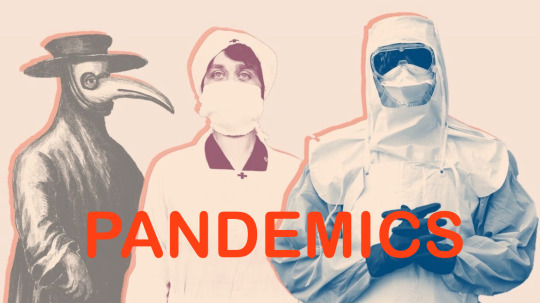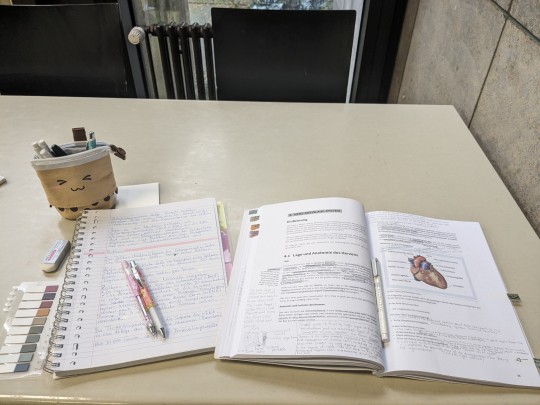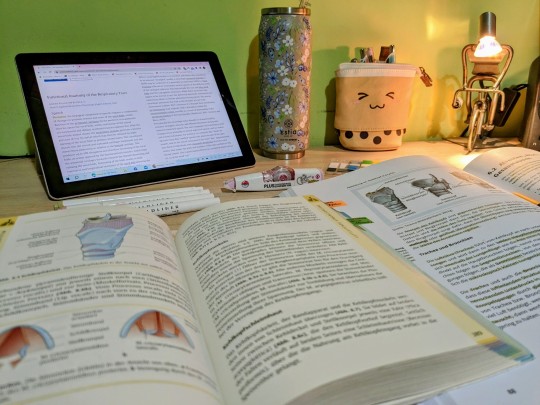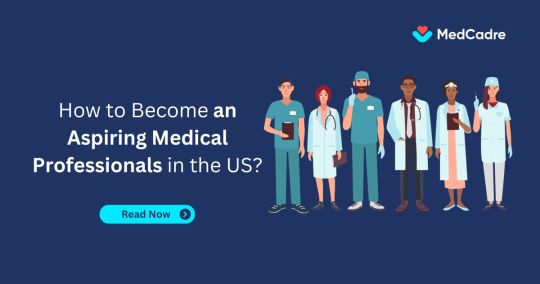#physician assistant
Explore tagged Tumblr posts
Text

PANDEMICS- Hostile Power Takeover? Learnings on Urban & Domestic Warfare, “Disease: Bacteria Part 1, Fundamental Considerations”:
Let’s say the hostile power is more technologically advanced & half robot/half machine or full machine, so seemingly unkillable. Organic beings are very vulnerable to having disease used as a weapon against them.
Disease can be a major benefit to this type of hostile power & it would be an incredibly powerful weapon. This allows the destruction of an organic-based domestic population & it can also allow the harvesting of resources to build new bodies and/or reuse of the entire body depending on the disease process.
There are many insidious ways diseases develop & spread. This process DOES NOT just occur in a laboratory. Remember that there are many different “groupings” of entities we refer to as pathogens or things with the ability to cause disease.
Bacteria are an important one. Bacteria & other pathogens can reproduce by multiple means. Here I’m going to speak about bacteria with the capacity to do Bacterial conjugation. This involves passing characteristic between two different bacteria similar to how sexual reproduction can pass on characteristics. This is overall an important conversation because a lot of the most complex & common life forms in our daily lives also spread these characteristics through similar principles through sexual reproduction.
> A lot of bacteria to our awareness are able to pass on characteristics. Bacterial DNA contains the “instructions”/“resources” for bacteria to either have or not have characteristics.
-Bacterial conjugation for example allows one bacteria to attach to a second bacteria & send resources to the second bacteria. After this process, the second bacteria is able to transform and display the characteristics transferred to it. Example: Bacteria A can change colors like a chameleon. Bacteria B cannot change color. Once Bacteria A attaches to Bacteria B and they are compatible, Bacteria A passes on resources to Bacteria B. Bacteria B then acquires the ability to change color. Bacteria B now can change color & has attainted the same advantage as originally only bacteria A had. Now Bacteria A and Bacteria B can change color like a chameleon.
- The other way characteristics form & occur in a bacterial population is through mutation. If a bacteria’s DNA is altered or mutates then it can produce a bacteria with new traits & characteristics. Radiation for example, like from X-rays, often causes mutations. Sometimes mutations do “nothing” we can really perceive with our eyes. But overtime, they will eventually create large changes and can produce huge benefits for bacteria. For example: A bacteria could have always have been wiped out from nuclear weapons then overtime from mutations it can acquire the ability to survive living inside an area with nuclear radiation.
-This is a very important concept to fully understand so that you can become cognizant of how insidious this process is when discussing what bioterrorism in the modern world can look like. Pandemics are not caused just from mysterious lab leaks. The practices we do everyday are still contributing to the next pandemic occurring.
-This also gives everyone a better understanding of how MRSA or an antibiotic resistant bacteria really was “made” inside our hospitals.
> Bacteria can possibly have random or genetically engineered characteristics.
-If there are 100 random bacteria on an isolated surface that formed there naturally, some will have favorable characteristics to cause severe disease. But, some bacteria will not have those characteristics to cause severe disease. The bacteria lacking these deadly characteristics, but are still part of the same family of bacteria, would be considered weaker pathogens (weaker pathogen meaning they would cause less severe disease in organic beings).
-**But it is important to remember, If someone purposefully put bacteria down on a surface there is a chance it will not be a random distribution in strength of bacteria & they will mostly all be bacteria with strong characteristics. That group would probably be closer to 100 out of 100 of the bacteria carrying the deadly characteristic.**
>There are 2 main basic premises (which can be further subdivided and added onto when discussing what makes pathogens strong, but for now I’m discussing a more fundamentals explanation) we consider when determining bacterial pathogen strength: number of bacteria & the amount of deadly/harmful characteristics each bacteria possess.
-Reducing the overall number of bacteria in a group of random bacteria does not always mean you make a pathogen less strong. (Example: Purposefully killing 50 bacteria out of 100 and now there are only 50 bacteria in the group.)
If you destroy many of the weaker bacteria & only leave strong bacteria to reproduce, pathogens overtime can get stronger & more deadly. So, by destroying only the weaker bacteria in a group of bacteria, you slowly make pathogens stronger through this natural process & it doesn’t have to occur inside of a laboratory. To make a bacterial pathogen less strong by focusing on decreasing the overall number of those bacteria that exist in our world, you would also have to consider how many of each strength you eliminate. This is because we currently we do not use practices that wipe out groups of bacteria 100%, so we must consider these two elements together instead of separate when evaluating pathogen strength. Example: Lets say there are 100 bacteria and you wipe out 90. Bacteria A can cause humans to be paralyzed. Bacteria B cannot paralyze humans. Out of the 10 bacteria still alive, if all 10 are Bacteria A then you have eliminated the chance people would be infected with the less severe version of the disease, with Bacteria B. In the long term Bacteria A now has a strong chance to reproduce & when Bacteria A infects people it would then cause paralysis in everyone & the population could collapse. In another scenario, consider if you wiped out 90 bacteria out of 100, but you did it purposefully. Out of the 10 bacteria left, 9 were Bacteria that were Bacteria B & couldn’t cause paralysis. The last 1 out of the 10 left was Bacteria A. Then when those 10 bacteria reproduced it effectively helps “dilute” this negative characteristic in this bacterial family. Based off randomness & probability, when there this group reproduces to the size of 20 bacteria only approximately 2 of them may carry Bacteria A’s paralytic characteristic & 18 will carry bacteria B’s characteristic that does not cause paralysis. So, even though we can’t stop the bacteria number from growing, since we mindfully intervened we can still divert the trajectory of the pathogen from becoming a pathogen with the ability to become “pandemic level” and/or very very harmful.
>Two ways pathogens can get weaker is by lowering the amount of bacteria in the world & by lowering its severe disease characteristics, but this these two categories have an important interplay.
-This is an oversimplified explanation of how disease spreads & evolves, but the fundamental principles are VERY important to the overall understanding of what’s occurring. Imagine a group of bacteria you count has 100 total bacteria. 50 of them carry a gene to cause paralysis in humans & 50 do not carry this gene. When 100 people come in contact with the 50/50 bacteria distribution and get sick only 50 out of 100 of the people get paralyzed. This allows the other 50 people time to work on vaccinations & interventions to stop everyone from eventually being paralyzed.
-But, if you kill the 50 out of the 100 bacteria that do not carry the gene for paralysis then your bacteria group went from 100 to a total of 50 in size. In the short term the spread of the disease is likely to go down, as it is less likely people will randomly spread 50 objects instead of 100. BUT, those 50 bacteria with the gene to cause paralysis will only reproduce with other bacteria that also have that gene. So this bacteria, since you wiped out the 50 that don’t cause paralysis, now ALL cause paralysis & anyone who comes in contact with this bacteria strain will get paralyzed. So eventually with time the group of 50 bacteria will reproduce to 100 & spread at the same rate as they were originally, but now they cause more harm to people.
>When you unknowingly touch a colony of bacteria on an object or life form, you pick up a random sample of random “strength” of bacteria.
>****PLEASE READ: you can ALSO pickup a sample of bacteria that is all “strong bacteria” but this is NOT usually a natural occurrence you will see & is suggestive someone or something altered the bacteria and purposefully put those bacteria there. A group of bacteria that looks like it formed organically vs one that was purposefully placed there can be differentiated with taking samples of surfaces and people & counting how many strong bacteria vs weak bacteria there are, but we as a population do not regularly test for this in this way. Due to this I’m going to speak with the viewpoint of natural bacteria groups that have a gradient of “strengths”. In an ideal world we would identity groups of bacteria that have gradients of strength of bacteria vs groups of all similar strength, as interventions to stop them from becoming strong pathogens work DIFFERENTLY.)
>After you touch those bacteria they attempt to multiply and stay alive on you. Then if you touch other things they can be placed on another surface or thing. Sometimes they are placed on other surfaces in an environment or you touch your body & they are placed closer to an entrance to the inside or your body & then they are able to enter your body.
-This process will cause one of the following to occur: bacteria will stay in the area you touched & colonize it, they will die when attempting to enter the body, the bacteria will give you a disease , or in some cases the bacteria will live symbiotically inside you & help your body. If a bacteria lives symbiotically with you & does not cause harm then we do not refer to that as a pathogen, but rather just as a bacteria.
>Anytime you wipe out a group of bacteria by taking out 100% it causes that pathogen to get weaker overall, but the issue is that we do not do interventions that wipe out 100%.
-Currently anytime you clean an object in the hospital with a sanitizing wipe, you always kill less than 100% of the bacteria. This leaves behind a certain % of bacteria & they will be the strongest of that group of bacteria, because they were able to live even though you applied a cleaning product on them. This means the strongest bacteria left, even though there are less after cleaning, are now reproducing over and over again & getting stronger.
-So, when there is an environment with a large amount of bacteria variability (so all these new patients with new exposures to new bacteria that travel and touch things all the time), with shared equipment, with not 100% effective methods to destroy pathogens, & this long list of variables, we slowly produce very strong & deadly pathogens inside of hospitals.
-IF someone purposefully puts deadly bacteria ontop of a surface inside a hospital and it is a group of 100 strong & identical or cloned bacteria with no difference in genetics then wiping them out through imperfect cleaning will overall reduce pathogen deadliness. This is because there are no “stronger” pathogens vs “weaker” pathogens. They are all the same strength in this example and therefore will always get weaker when you reduce their number because they won’t reproduce to be more deadly.
>People often think when people are trying to cause them harm that would only occur when someone makes a pathogen in a lab & then deceptively goes and places some near you. This is not accurate.
-With knowing this do you see how for a hostile power there is actually LESS incentive to going through with all that work & instead a hostile power can abuse the system to cause harm? If you expect biological warfare to ONLY come out of a lab, this means you would be looking for the wrong patterns of behavior & pathogens will spiral out of control.
A lot of practices we currently use now unfortunately heavily contribute to this process that causes pathogens to get stronger.
#pathogens#doctor#medicine#physician assistant#nursing#nurse#registered nurse#evolution#disease#bacteria#np#nurse practitioner#pa#md#rn#meds#pharmacy
434 notes
·
View notes
Text

#heard in the emergency room#heardintheemergencyroom#emergency medicine#medical humor#doctor#physician assistant
64 notes
·
View notes
Text



My boyfriend and I decided to study in the library and I think it was a great idea.🎇 We were so concentrated and time went by fast ✨
#college#dark academia#light academia#study aesthetic#study motivation#studyblr#studygram#studying#studyspo#uniblr#university#physician assistant#med student#med school#anatomy
278 notes
·
View notes
Text


06•05•2024
cozy day of studying ft. my cutie nespresso cup ♡
#studyblr#lunastudyspace#studyspo#study aesthetic#studywithme#studyinspo#notion#notion template#aesthetic#PAstudent#physician assistant
71 notes
·
View notes
Text
Abdominal Pain PSA
I've had a run of people admitted to the ICU after have 1-2 weeks of abdominal pain who were struggling to eat or drink that ended up having conditions leading to necrotic bowel. Dead bowel makes people incredibly sick. Like, death's door sick. Anecdotally, I'd say maybe 60% of our patients make it through such an ordeal. Every time I talk with their families, their loved ones say that they looked bad and they tried to get the patient to go get some help. Often, these people wait too long.
So.
PSA: if you're having abdominal pain and can't keep anything down for more than 48 hours (especially in the context of N/V WITHOUT bowel movements), you NEED to go to the ER. Not urgent care. Not your PCP. The ER. Please get checked out. Do not let things sit. If you have known GI disease like diverticulosis, a hernia, etc, even more of a reason to get checked out.
#critical care#medicine#abdominal pain#necrotic bowel#medblr#pablr#nurblr#pharmblr#physician assistant#physician associate#pa-c#pre-pa#pa-s#pa school#caspa
170 notes
·
View notes
Text
I have completely underestimated how hard it is to have compassion for people that are in fact rude, racist, misogynistic people. People assume that those who work in the medical field need to hold up this fortitude against verbal attacks and absolute disrespect for us as human beings by patients. Most of the time it is so much easier to become numb to it. But they deserve the best care possible, so becoming numb leads to poor patient care. So how can I keep doing this without completely burning out? I think its really fucked up to image health care providers should have to always rise above with no feelings hurt, because feelings and psyches and mental health get wrecked everyday. Can anymore give me guidance with compassion?
8 notes
·
View notes
Text
This is unrelated from my usual posts, but if anyone has questions about what it's like to be in a physician assistant master's program (application process, patient care hours, personal statement, my experience in the program, etc.), feel free to ask!. I'm in the first quarter of my first year, and I'm happy to share my experiences and resources that I've used thus far!
10 notes
·
View notes
Text








#Medical Administrative Assistant Shirt#CNA Gift#Medical Assistant Crewneck#Badge Buddy#Future Medical Assistant Shirt#Physician Assistant#doctor assistant#medical professionals#emergency department
2 notes
·
View notes
Text
Healthcare Recruiting Agency
We are a Locum Tenens Staffing Company and Healthcare Recruiting Agency
We are constantly posting new healthcare positions on our job board for both locums and permanent assignments throughout the entire United States.

#doctors#healthcare#jobs#nursepractitioners#radiologists#urgent care#healthcare jobs#physician jobs#physician assistant
4 notes
·
View notes
Text
(Nurse looking up the policy for a patient that wants to be a DNR, but having trouble finding it)
Where there’s a will, there’s a policy
#heard in the emergency room#heardintheemergencyroom#emergency medicine#medical humor#doctor#physician assistant
7 notes
·
View notes
Text




{04.11.2023} The weather is magical 🌻😁 I wish I could concentrate on my studies more
#college#dark academia#light academia#study aesthetic#study motivation#studyblr#studygram#studying#studyspo#uniblr#med student#medicine#physician assistant#cat#cats of tumblr#greece#beach#beautiful
99 notes
·
View notes
Text


finally drawing again in between study sessions
#studyblr#lunastudyspace#studyspo#study aesthetic#studywithme#notion#study space#aesthetic#artistsupport#painting#PAstudent#physician assistant
18 notes
·
View notes
Text
Followers
I am following 118 people on tumblr.
The vast majority of these people (verifiable, ACTUAL people) haven't updated in 3+ years and it makes me sad. :-(
9 notes
·
View notes
Text
How to Become an Aspiring Medical Professionals in the US?

Aspiring medical professionals in the US embark on a rigorous and rewarding journey that requires dedication, perseverance, and a passion for helping others.
Here's a comprehensive guide to becoming a medical professional in the United States:
Educational Requirements:
a. Undergraduate Degree: Complete a bachelor's degree in any major, but it's recommended to focus on science-related fields like biology, chemistry, or physics to prepare for medical school prerequisites.
b. Medical School (MD or DO): Earn a Doctor of Medicine (MD) or Doctor of Osteopathic Medicine (DO) degree. Medical school typically takes four years and involves a combination of classroom learning, laboratory work, and clinical rotations.
2. Premedical Preparation:
a. MCAT (Medical College Admission Test): Take and score well on the MCAT, a standardized test that assesses your scientific knowledge and problem-solving skills.
b. Shadowing and Volunteering: Gain hands-on experience in healthcare settings by shadowing physicians, volunteering in hospitals, or participating in research projects.
c. Extracurricular Activities: Demonstrate your commitment to healthcare and community service through extracurricular activities related to medicine or public health.
3. Medical School Application:
a. Strong Academic Record: Maintain a high GPA in your undergraduate studies, particularly in science courses.
b. Letters of Recommendation: Secure strong letters of recommendation from professors, mentors, and physicians who can attest to your academic and personal qualities.
c. Personal Statement: Craft a compelling personal statement highlighting your motivations, experiences, and aspirations in the medical field.
4. Residency Training:
a. Match Process: After medical school, participate in the National Resident Matching Program (NRMP) to match with a residency program in your desired speciality.
b. Specialization: Residency training typically lasts three to seven years, depending on the speciality, and provides in-depth clinical training under the supervision of experienced physicians.
c. Board Certification: Once you complete a residency, you become eligible to take and pass the board certification exam for your speciality.
5. Licensure and Continuing Medical Education:
a. Medical License: Obtain a medical license from the state where you intend to practice.
b. Continuing Medical Education (CME): Commit to lifelong learning by completing CME courses to stay up-to-date with the latest medical advancements and maintain your license.
6. Career Options:
a. Physician: Choose from a wide range of medical specialities, such as internal medicine, pediatrics, surgery, family medicine, or psychiatry.
b. Physician Assistant: Work under the supervision of a physician to provide comprehensive medical care.
c. Nurse Practitioner: Provide primary and specialized healthcare services independently or in collaboration with physicians.
d. Other Medical Professionals: Explore various healthcare professions, including dentists, pharmacists, optometrists, and audiologists.
Once you are ready to join organizations to offer your services, you need a platform to help you get a job. Check MedCadre, and you will get what you seek as an aspiring medical professional.
How does MedCadre help Aspiring Medical Professionals?
MedCadre is a one-stop solution to find the right job for you. The platform helps aspiring medical professionals get placement in the medical field.
All you have to do is visit the website, click on the form, and fill it out with relevant information. Once we verify your Resume, we will get back to you.
Becoming a medical professional in the US is a challenging yet fulfilling career path. With dedication, perseverance, and a passion for helping others, you can make a significant impact in your patients' lives and contribute to advancing healthcare.
Submit your Resume to MedCadre to enhance your career in the medical profession.
visit our site by clicking the link: https://medcadre.com/careers
#medical professionals#physician assistant#nurse practitioner#nursestaffing#healthcarestaffing#allied staffing
4 notes
·
View notes
Note
i follow the “physician assistant” tag and saw your post. i wanted to ask how you went about contacting PAs for shadowing and how many hours did you have when you applied. thanks!
Hello, that's a great question! I had around in-person 62.7 shadowing hours with a mix of MD, DO, NP, and PA hours. Here's the breakdown:
PA - 12.7
MD/DO - 47 hours
NP - 3 hours
As you can see, most of my hours were actually outside of the PA profession. I was originally planning to go to medical school, so I had those prior to deciding to become a PA!
I also had about 19.5 hours of virtual shadowing from Empowered PAs information sessions. For context, I applied during the early years of the ongoing pandemic. Schools differ in whether they accept virtual shadowing hours, so definitely check with your specific program if you are considering using those!
In regards to how I contacted PAs to shadow, I reached out to my PCP (who was a PA) and reached out through my coworkers as a CNA . It turned out that a PA worked at my organization, so I was able to shadow her for a few days.
I lived in a rural area, so I basically asked around my work to see if anyone knew a PA I could shadow. There were some PAs who I was unable to shadow due to their organization's restrictions but who allowed me to interview them, which I also listed on my CASPA. I also looked up PAs in my area and reached out to their offices about shadowing, but I didn't get any opportunities through that avenue. It definitely helps if you have a foot in the door, which I know can be difficult in the health profession.
I hope that helps! Best of luck, and feel free to reach out if you have more questions.
5 notes
·
View notes
Text

First Post: So, believe it or not, this is the background to my first apartment 🌞!
Picture taken while I shooting photos for my graduation! I’ll talk more about that in a later post!
I’m going to start from the beginning 🥂
XOXO, Yolie
2 notes
·
View notes